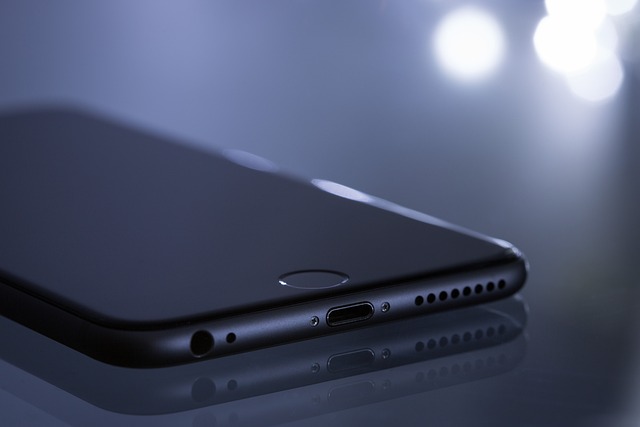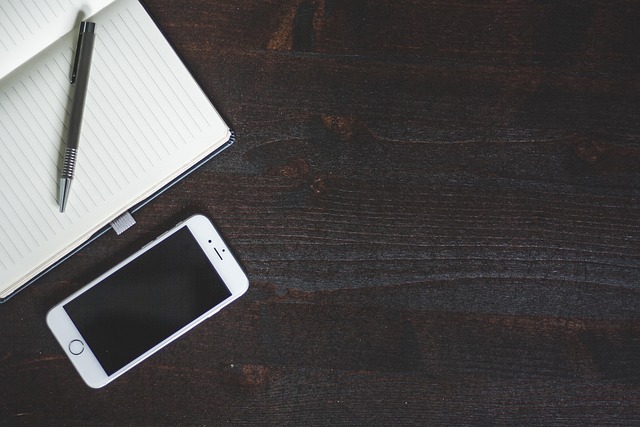When your iPhone starts showing signs of reduced battery life or unresponsiveness during low power scenarios, it's time to consider a battery replacement. Utilize Apple's Battery Health feature in iOS 11.3 to monitor your device's battery health, which will guide you on whether a new battery is needed. A battery with at least 80% capacity is considered good, but if the Battery Health reading falls below this or you notice a significant drop in screen time duration, it's likely your battery needs replacing. Frequent unexpected shutdowns are another clear indicator. Regular upkeep and staying attuned to these signals will help you decide when to replace your iPhone battery, ensuring continued efficiency and reliability of the device.
For those on a budget, consider replacing your iPhone battery yourself or opting for an affordable third-party service. DIY replacement involves careful handling due to the risks associated with lithium-ion batteries and requires tools and parts specific to your iPhone model. Always follow safety precautions such as working in a well-ventilated area and charging the new battery cautiously to monitor for issues. Professional repair shops offer competitive pricing for battery replacements, using either genuine or high-quality aftermarket parts, with experienced technicians ready to assist. Online marketplaces also provide DIY kits with detailed guides to save you time and money.
Post-replacement, focus on maximizing your iPhone's battery durability by configuring it for optimal energy efficiency. Dim the OLED screen, set 'Low Power Mode' to activate at a specific battery level, keep your software up-to-date, manage app permissions to prevent background drain, and monitor app usage to identify power-intensive apps. These steps will help you maintain your iPhone's performance after replacing its battery.
If your iPhone's battery starts to underperform, act promptly to extend its lifespan. While Apple offers official battery replacement services, you can save money by choosing reputable service providers that advertise clear pricing and use genuine parts. Take advantage of promotional periods for additional savings. Select a provider based on credibility, competitive pricing, and positive customer feedback to ensure quality service without overspending.
Replacing an iPhone battery can be a cost-effective solution to extend your device’s lifespan without breaking the bank. Whether your phone is experiencing shorter battery life, unresponsive screens, or a decline in performance, understanding its battery health is key. This article provides a comprehensive guide on recognizing when it’s time for an iPhone battery replacement, followed by a detailed DIY approach with safety measures, and compares professional services to help you make the best decision. Additionally, learn how to maintain your new battery and which alternatives to Apple’s service offer the most value. Replacing an iPhone battery need not be a daunting task; with the right knowledge, it can be an easy and economical fix for your device.
- Understanding Your iPhone's Battery Health: Signs It's Time for a Replacement
- Step-by-Step Guide to DIY iPhone Battery Replacement: Safety and Precautions
- Cost-Effective Alternatives to Apple's Official Battery Replacement Service
- How to Extend Your iPhone's Battery Life After Replacement: Tips and Tricks
- Comparing Professional Services for iPhone Battery Replacement: Finding the Best Deals
Understanding Your iPhone's Battery Health: Signs It's Time for a Replacement

When your iPhone starts displaying signs of battery distress, such as a shorter battery life between charges or an unresponsive device when the power is low, it might be time to consider replacing the battery. Understanding your iPhone’s battery health is crucial for maintaining its performance and longevity. Apple’s in-built Battery Health feature available on iPhones with iOS 11.3 or later can provide insights into your battery’s condition. This tool evaluates the maximum capacity of your battery and recommends if a replacement would be beneficial. Typically, a battery with a capacity between 80% and 100% is considered to be in good health. However, if the Maximum Capacity reads below 80%, or if you notice frequent screen time where the phone used to last longer before, it’s a strong indicator that a replacement iphone battery would enhance your user experience. Additionally, pay attention to any unusual shutdowns or restarts due to battery strain under normal conditions, which further suggest that the battery may have degraded beyond the point of effective use and should be replaced. Regular maintenance and understanding these signs can help you determine when it’s time for an iphone battery replacement, ensuring your device operates efficiently and reliably.
Step-by-Step Guide to DIY iPhone Battery Replacement: Safety and Precautions

If your iPhone’s battery is draining faster than usual, and you’re looking to extend its lifespan without incurring a high cost, a DIY iPhone battery replacement might be a viable option. It’s crucial to approach this task with caution, as handling lithium-ion batteries can pose safety risks if not done correctly. Before proceeding, ensure you have the right tools and replacement parts compatible with your device model. Apple iPhones are intricately designed, so precision is key. Start by powering off your iPhone and backing up its data. Remove the old battery by unscrewing the screws securing the battery compartment, carefully disconnect the battery from the motherboard, and transfer these connections to the new battery. Throughout this process, work in a well-ventilated area to avoid any health risks associated with the battery’s chemicals. After reassembling your iPhone, charge it sparingly at first, starting with a 10% charge and monitoring it for any signs of overheating or malfunctioning. This cautious approach helps ensure the safety of both your device and yourself. By following these steps and paying close attention to safety, you can successfully replace your iPhone battery without the need for professional assistance, saving both time and money. Remember to adhere to all manufacturer guidelines and local regulations regarding electronic repairs.
Cost-Effective Alternatives to Apple's Official Battery Replacement Service

When your iPhone’s battery starts to wane, replacing it can restore its performance without the need for a costly new device. While Apple offers an official battery replacement service, it comes with a price tag that might give pause to budget-conscious users. Thankfully, there are cost-effective alternatives that provide similar outcomes. Independent iPhone repair shops often offer competitive rates for battery replacements, utilizing genuine or high-quality aftermarket parts. These shops have skilled technicians who can perform the replacement service swiftly and efficiently, ensuring your device remains in capable hands. Additionally, online marketplaces are repositories of reputable vendors selling do-it-yourself battery kits specifically tailored for various iPhone models. These kits come with comprehensive guides, allowing you to replace your iPhone battery yourself, saving you both time and money. By carefully choosing between these options, you can extend the life of your iPhone without breaking the bank.
How to Extend Your iPhone's Battery Life After Replacement: Tips and Tricks

When you’ve replaced your iPhone battery, a few smart practices can help ensure its longevity and extend its battery life. Firstly, optimize the phone’s settings for energy efficiency. Dim the screen when not in use, as OLED displays are particularly sensitive to brightness levels; lowering it can save power. Activate ‘Low Power Mode’ automatically at a specific percentage, like 30%, so it kicks in regularly and conserves battery. Additionally, regularly update your iPhone’s software, as Apple often releases updates that improve system performance and battery life.
Next, manage app permissions carefully; too many apps running in the background can drain the battery quickly. Close apps you’re not using by swiping up from the bottom of the screen to access the App Switcher and then swipe them away. Also, be mindful of your usage patterns. For instance, if certain apps consistently drain your battery, consider removing or limiting their use, or explore alternative apps that are more battery-friendly. Utilizing features like ‘Battery Percentage’ in the Battery settings can help you monitor which apps are using the most power and make informed decisions about how to manage your device’s energy consumption after replacing the battery.
Comparing Professional Services for iPhone Battery Replacement: Finding the Best Deals

When your iPhone’s battery starts to wane, it’s crucial to address it promptly to maintain optimal performance and longevity of your device. While professional services for iPhone battery replacement offer convenience and reliability, the cost can be a significant factor for budget-conscious consumers. To ensure you get the best deal without compromising on quality, it’s essential to compare service providers. Start by researching local authorized service centers and independent repair shops that specialize in iPhone battery replacements. Look for transparent pricing and genuine parts that come with warranties. Many reputable services offer competitive rates that match or even undercut the prices of Apple’s official services, without skimping on the quality of replacement. Additionally, consider timing your replacement during promotional periods when service centers might offer discounts or bundle services. By carefully evaluating your options and comparing services, you can replace your iPhone battery cost-effectively while ensuring that your device is in capable hands. Remember to verify the credentials of any service provider you choose, and check reviews from previous customers to guarantee a satisfactory experience. With these steps, you can keep your iPhone running efficiently without breaking the bank.
When addressing iPhone battery issues, understanding your device’s health and knowing how to replace it economically can significantly extend its usability. This article has outlined the key aspects of recognizing when it’s time for an iPhone battery replacement, provided a detailed DIY guide to perform this task safely, highlighted cost-effective alternatives to Apple’s official service, shared tips on maximizing your iPhone’s battery life post-replacement, and compared professional services for the best value deals. By following these steps and recommendations, you can replace your iphone battery without overspending and enjoy a more reliable and efficient phone experience. With careful consideration and proactive maintenance, your iPhone can continue to serve as a dependable companion for years to come.
